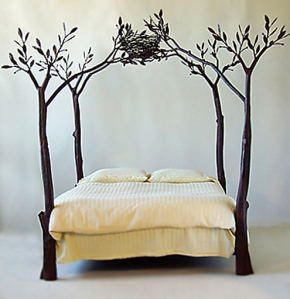Earlier this week I ventured out, camera in hand, with some trepidation—just to see if I could get a clandestine photo of the bat rastards (actually, just one stung me) that chased me into the house last week. I’m fairly confident they’re Eastern yellowjackets. I didn’t want to get too close to the nest (for fear they recognize my behind), so this is more “record shot” than art! (Oh, the things I do to entertain my visitors!)
Yes, I know they need to be removed from the garden if I’m ever to be able to work out there again. I can’t do it myself (for a variety of reasons, not the least of which is I don’t like killing anything—even if it did sting me), so Michael is taking up the task. Read the details of my attack in my posting here.
Here’s something alarming I read on Wikipedia:
Yellowjackets are social hunters living in colonies containing workers, queens, and males. Colonies are annual with only inseminated queens overwintering. Fertilized queens occur in protected places as hollow logs, in stumps, under bark, in leaf litter, in soil cavities, and human-made structures. Queens emerge during the warm days of late spring or early summer, select a nest site, and build a small paper nest in which eggs are laid. After eggs hatch from the 30 to 50 brood cells, the queen feeds the young larvae for about 18 to 20 days. Larvae pupate, emerging later as small, infertile females called workers. By mid-summer, the first adult workers emerge and assume the tasks of nest expansion, foraging for food, care of the queen and larvae, and colony defense.
(Here’s the really alarming part below)
From this time until her death in the autumn, the queen remains inside the nest laying eggs. The colony then expands rapidly reaching a maximum size of 4,000 and 5,000 workers and a nest of 10,000 and 15,000 cells in late summer. At peak size, reproductive cells are built with new males and queens produced. Adult reproductives remain in the nest fed by the workers. New queens build up fat reserves to overwinter. Adult reproductives leave the parent colony to mate. After mating, males quickly die while fertilized queens seek protected places to overwinter. Parent colony workers dwindle, usually leaving the nest and die, as does the foundress queen. Abandoned nests rapidly decompose and disintegrate during the winter but can persist as long as they are kept dry but are rarely used again.
Now I highly doubt that 4,000 workers could possibly fit in this small decorative birdhouse, but then again I was surprised that even the eight that I did see could fit. I’ve managed to water the garden in spurts over the past few days, but always with a wary eye to the left side of the garden. So far, no more keister bites! Flashback: the only other time I was stung by something was when I was about eight years old. My younger sister and I were playing house in the front yard. We were hanging sheets over the bushes outside our bedroom window, pretending to do laundry I suppose (we had strange ideas about what was considered fun when were kids, didn’t we?). I unknowingly tossed my sheet over a yellowjacket nest. Yes, yellowjackets. Déjá vu.
© Cindy Dyer. All rights reserved. http://cindydyer.zenfolio.com/p270076135






 Why I feel the need to revisit orange: I’m working on final changes to a conference program for a client. The conference is next month in San Francisco. The client is working on conference signage and just asked if I knew what PMS (
Why I feel the need to revisit orange: I’m working on final changes to a conference program for a client. The conference is next month in San Francisco. The client is working on conference signage and just asked if I knew what PMS (



 Yes, I am fully aware that $15,000 is pretty pricey for a bed frame, but if just 15,000 of my currently 82,733 blog visitors chipped in just $1 each, I could sleep in this bed every night! Imagine that. (I didn’t account for tax and shipping charges, though—this thing must weigh quite a bit. Does anyone have a large truck?)
Yes, I am fully aware that $15,000 is pretty pricey for a bed frame, but if just 15,000 of my currently 82,733 blog visitors chipped in just $1 each, I could sleep in this bed every night! Imagine that. (I didn’t account for tax and shipping charges, though—this thing must weigh quite a bit. Does anyone have a large truck?) 


 Some people like light reading to lull them to sleep. I sometimes opt for the techie photography books! Currently residing on my nightstand are two very informative books on the subject of closeup/macro photography—
Some people like light reading to lull them to sleep. I sometimes opt for the techie photography books! Currently residing on my nightstand are two very informative books on the subject of closeup/macro photography—







Recent Comments